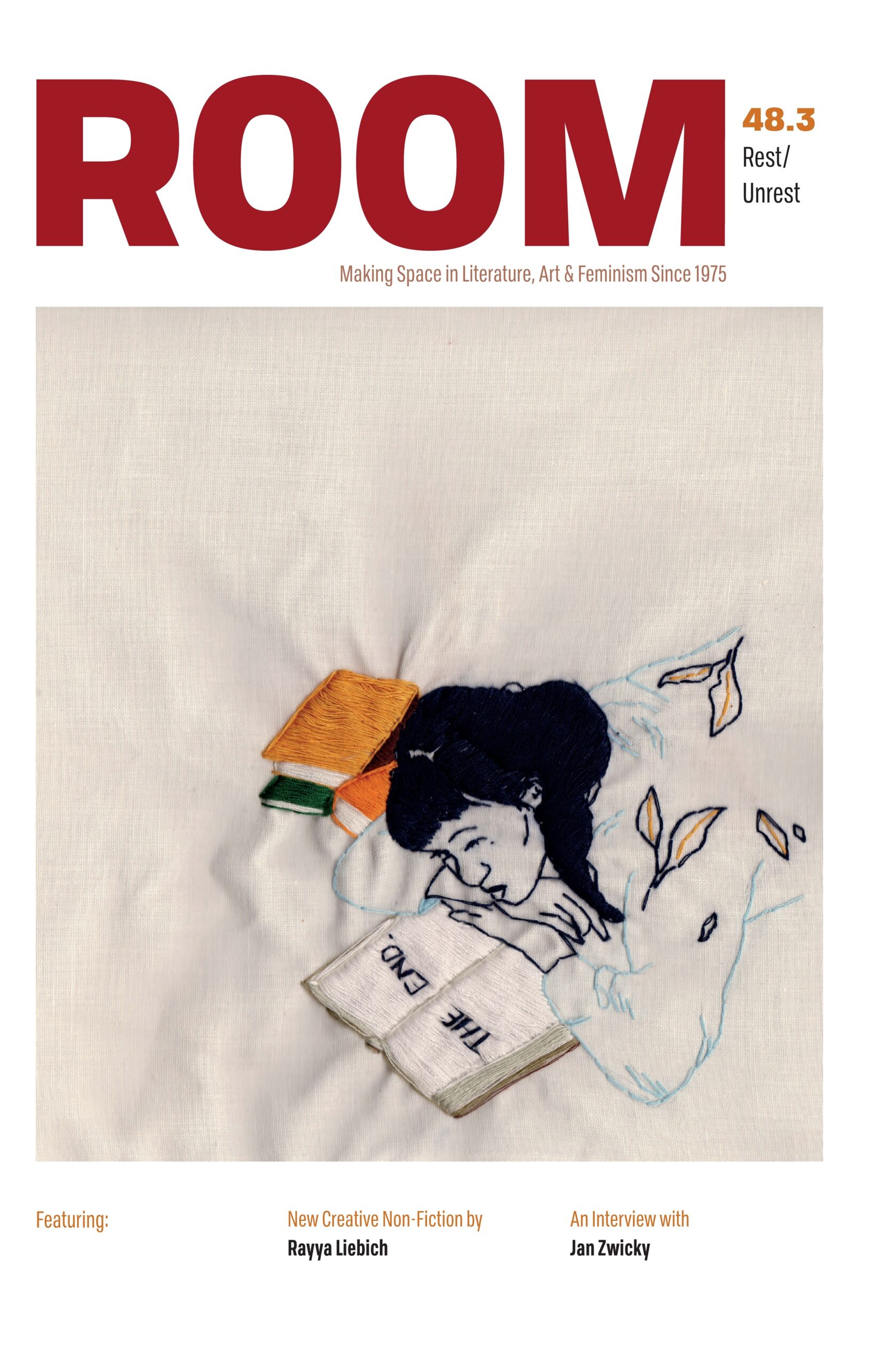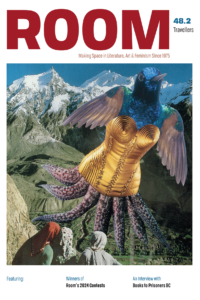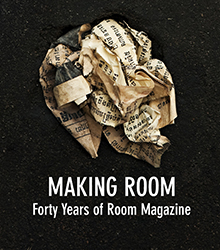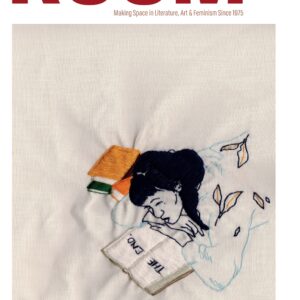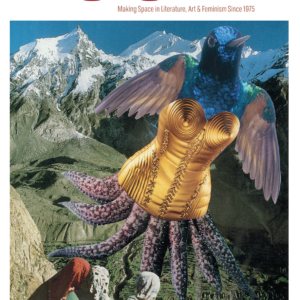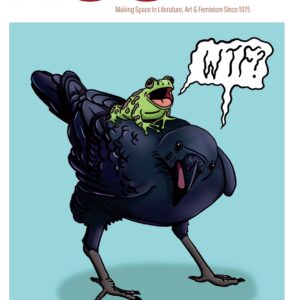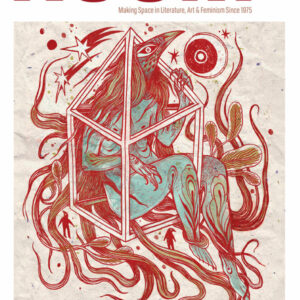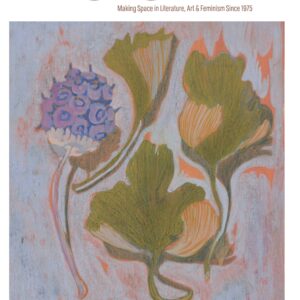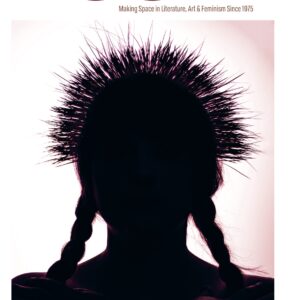Brick’s Managing Editor, Liz Johnston talks #LitMagLove with Room editor, Rachel Thompson.
In our continuing series, #LitMagLove, Brick‘s Managing Editor, Liz Johnston talks with Room editor, Rachel Thompson.
Who are your first readers of unsolicited work at Brick and how do you make decisions about what appears in the magazine after first reading?
We are very lucky to have a team of two intelligent, careful, thoughtful volunteers as first readers of unsolicited work. Like Brick’s editors, these volunteers are writers themselves, and so they’re very conscientious of how it feels to be on the other side of a rejection letter. Before entrusting volunteers with managing unsolicited submissions, we get their take on a selection of pieces to understand how they are as readers and whether they’ve got a solid sense of the kind of work we publish. We also encourage them, especially at the beginning, to pass along (to Brick’s publisher Laurie and myself) even those pieces they’re pretty sure aren’t right, but which aren’t completely obvious no’s. After that first reading, Laurie and myself make the decision whether or not the piece should go on to the editorial board (which is currently made up of Linda Spalding, Michael Helm, Rebecca Silver Slayter, Laurie Graham, Martha Sharpe, and Dionne Brand). If we decide yes, the piece will be included in one of our “blue books,” where we assemble together all of the pieces, solicited and not, to be considered for an issue. We usually put together two blue books each issue, which the editors read and make their final decisions on.
What happens when your team disagrees about a piece?
While there are those no-hesitation moments when we’ll all look at the same brilliant piece and agree it’s brilliant, I’d say disagreement is more common, and sometimes the most contentious pieces are the most exciting. When disagreement happens, we simply talk more. Sometimes everyone just doubles down on their original take, but sometimes hearing each other out helps us come to some sort of consensus. Some of us might change our minds, or at least accept that a piece we don’t like personally might do something interesting in the magazine.
You offer writers a free month for submissions. Does the volume of submissions go up this month? Are these submissions read as closely as paid submissions?
Yes to both of these questions. We’ve been using Submittable for a little over a year and only introduced the free month in December. (We still accept submissions through the mail, as well.) We saw a big spike in submissions during that free period, and we’re still catching up. But we’re reading those free submissions as carefully as we did the ones with a fee.
We also offer the option to submit and subscribe; if a submitter chooses this option, I hope it’s because they want to read the magazine, not because they expect special consideration. Whether or not someone pays to submit does not alter the quality of the work they’re submitting, so it shouldn’t factor into our thinking when we read these pieces either. Unfortunately, we’re unable, at this time, to make our submissions through Submittable free year-round.
Often when I talk to writers outside of Canada—in particular in the U.S.—they have heard of Brick, even if they don’t know many other Canadian journals. How have you established Brick as an international journal and how often do you solicit writing or seek writing from beyond Canada’s borders?
It’s always exciting to hear that readers outside of Canada know Brick. Thank you.
Brick’s international presence was established before I came aboard, and a large factor in the recognition beyond our borders is the simple fact that Michael Ondaatje led the magazine for almost thirty years and truly championed it wherever he went. Today, our international contributing editors help in that role, and we’re always trying new marketing campaigns, etc., to promote Brick in the U.S. and overseas.
And yes, we publish international writers, too, which does bolster that international reputation. We value our role in showcasing Canadian writers alongside their international peers. Our editors will often solicit work from international writers, and our unsolicited submissions are open to international writers as well.
You have an impressive group of contributing editors soliciting materials for you. What is the best thing about having this channel?
One great thing about our contributing editors is that international reach they give us. By virtue of where they’re located, they’re more tuned into the literary culture outside of Canada than we can possibly be. We have our contributing editors to thank for Birna Bjarnadóttir, Khun Srun, Juan Gabriel Vásquez, and Jerzy Illg (to name but a few) appearing in our pages.
What common errors do writers make when submitting to Brick?
As most lit mag editors would probably say, the most common “error” writers make is not knowing the magazine they’re submitting to. I don’t expect every submitter to be a subscriber or even to have seen the magazine in print; but twenty minutes or so on our website could probably show that we’re not the best place to send straight reportage or how-to articles. We also receive a lot of poetry, even though we explicitly state in our guidelines that we do not read unsolicited poetry.
What’s the difference between the non-fiction that works in Brick and the non-fiction that works in general interest magazines?
The “literary” bent is key for us. This doesn’t necessarily mean that an essay must explicitly reference literary works, though we’re often drawn to pieces that explore life in art and art in life. Subject matter aside, we’re looking for an attention to craft, style, and voice that you don’t always find in general interest magazines.
Once you’ve accepted a story, what do you expect of the writer during the editing process and beyond?
We almost always have some editorial queries to run past a writer. If we want to do a more substantive edit, we’ll let the writer know if that’s a condition of accepting their piece. We love working with writers who are open to suggestions but will push back when they disagree, who attend to each word as carefully as we strive to—it’s their piece, after all! We appreciate writers who reply with some level of promptness to our queries or let us know if they’re too busy to get back by a given deadline; we can generally accommodate extensions into our schedule if someone asks for it, but if we just hear nothing at all, we can get a bit panicky. Aside from that, I can’t think of any other expectations we have of our contributors, though if they spread the word about the issue, that’s fantastic.
When we met at the Cultural Magazines Summit in 2015, Farzana Doctor was on a diversity panel, suggesting magazines create a “diversity plan.” How does Brick work to increase the diversity of writers publishing in the journal?
We agree that putting a plan in place and being intentional about our desire to more fully represent the diversity of literary talent, and of humanity, in Toronto, Canada, and around the world is essential. In terms of formalizing our strategies, we’re still in the research phase: seeing what other magazines are doing, attending panels like the ones at the Cultural Magazine Summit (though I can’t believe that was already two years ago!), discussing diversity, representation, and inclusion among the editorial board.
At present, we are operating somewhat more individually, each editor trying to do the work of improving representation in the magazine as they solicit work from writers or make decisions about pieces, thinking deeply about how we’re asking to hear from and why we choose to accept or reject a piece of writing. All of us see how this tenor of injustice reverberates in our magazine, and how we’re responsible for that, and we ache for change, both in our magazine and in the wider world. Our new publisher has made it her goal to record each of our thoughts and desires when it comes to fairer representation in the pages of Brick, and to make it so that we can speak about it more candidly than we do now and, most importantly, act on it concretely.
What other literary journals do you read? Any recent issues that you found exciting?
I had a bad literary-journal habit before I started working at Brick, and now that I’m here, where we’ve set up all of these subscription swaps, I’m always piling up more magazines on my bedside table than I can possibly get through. We’ve got so many great magazines in Canada; I like the Fiddlehead, Grain, The New Quarterly, EVENT. The stories in the Malahat’s recent Indigenous Perspectives issue ranged from dark to funny to mesmerizing, and (not trying to butter you up or anything!) I loved Room’s “Women of Colour” issue: the strange, funny story by Jamila Allidina, and Jael Richardson’s painful one. Lots of great stuff in there.
From the States, my favourites are A Public Space, Tin House, the Georgia Review, and Little Star for the great range of material and voices you’ll find in their pages. The Paris Review’s interviews rarely disappoint.
Some magazines I subscribe to loyally, year to year. But I can’t possibly keep up with all, so a lot of the time I’m flipping through, reading a story or essay here or there from the stack, and then seeing what the next magazine has to offer.

